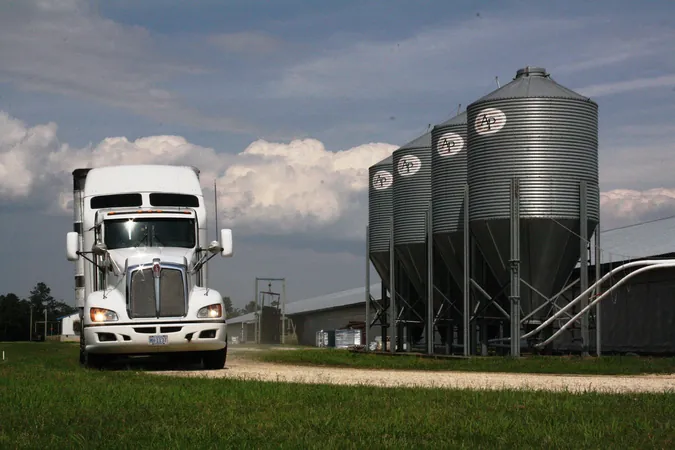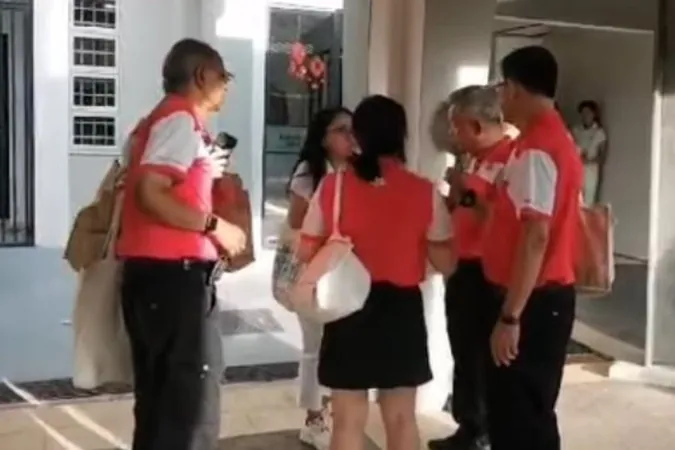
Revolutionizing Livestock Transport: Rerouting Trucks to Combat Disease Outbreaks!
2025-08-21
Author: Jia
Innovative Strategy to Curtail Disease Spread
Imagine a game-changing approach to livestock transport that could drastically reduce disease outbreaks among farms! Researchers from the University of Minnesota and North Carolina State University have discovered that rerouting trucks can slash contacts between infected and uninfected farms by up to 42%, even in the absence of thorough cleaning and disinfection.
Groundbreaking Research Reveals Untapped Potential
This eye-opening research, recently published in *Preventive Veterinary Medicine*, underscores the largely unexplored role of contaminated vehicles in spreading diseases like Porcine Epidemic Diarrhoea virus (PEDv) and Porcine Respiratory and Reproductive Syndrome virus (PRRSv). The researchers argue that enhancing vehicle routing could be a critical strategic tool for farmers lost in the constant battle against these costly agricultural threats.
Rethinking Vehicle Schedules
Prof. Gustavo Machado, the lead researcher, noted, "Currently, livestock transport logistics rely heavily on weekly schedules from a call center. Our study proposes that reevaluating these routes could significantly mitigate disease spread among farms, protecting farmers from potentially devastating impacts."
A Data-Driven Approach to Disease Prevention
To support their hypothesis, the team analyzed data from 1,609 commercial swine farms, factoring in the number of animals, GPS tracking of trucks, and cleaning and disinfection protocols. Each vehicle was ranked using a novel scoring system, assessing everything from the health status of visited farms to efficiency and sanitation protocols.
Staggering Impact of the New Model
The study's findings were impressive: even with subpar cleaning efforts, the proposed rerouting model successfully minimized contacts between infected and uninfected farms by 42%, while decreasing overall interactions between distinct farm networks by 17%. When cleaning and disinfection reached 100% effectiveness, the model could eliminate all contacts entirely!
Challenges Ahead: Weighing Costs and Benefits
But it's not all smooth sailing. The rerouting system necessitated more frequent cleaning stops, resulting in up to 81% more cleaning events and increased travel distances of 54%. Prof. Machado cautioned that while this strategy holds promise, it may significantly increase operational costs for farmers.
Future Research Directions
Looking forward, the researchers aim to quantify the true costs of this innovative rerouting strategy and further assess the effectiveness of cleaning and disinfection in real-world scenarios. Stay tuned as these breakthroughs could redefine how livestock transportation is managed, paving the way for healthier farms and a more resilient agricultural industry!

 Brasil (PT)
Brasil (PT)
 Canada (EN)
Canada (EN)
 Chile (ES)
Chile (ES)
 Česko (CS)
Česko (CS)
 대한민국 (KO)
대한민국 (KO)
 España (ES)
España (ES)
 France (FR)
France (FR)
 Hong Kong (EN)
Hong Kong (EN)
 Italia (IT)
Italia (IT)
 日本 (JA)
日本 (JA)
 Magyarország (HU)
Magyarország (HU)
 Norge (NO)
Norge (NO)
 Polska (PL)
Polska (PL)
 Schweiz (DE)
Schweiz (DE)
 Singapore (EN)
Singapore (EN)
 Sverige (SV)
Sverige (SV)
 Suomi (FI)
Suomi (FI)
 Türkiye (TR)
Türkiye (TR)
 الإمارات العربية المتحدة (AR)
الإمارات العربية المتحدة (AR)